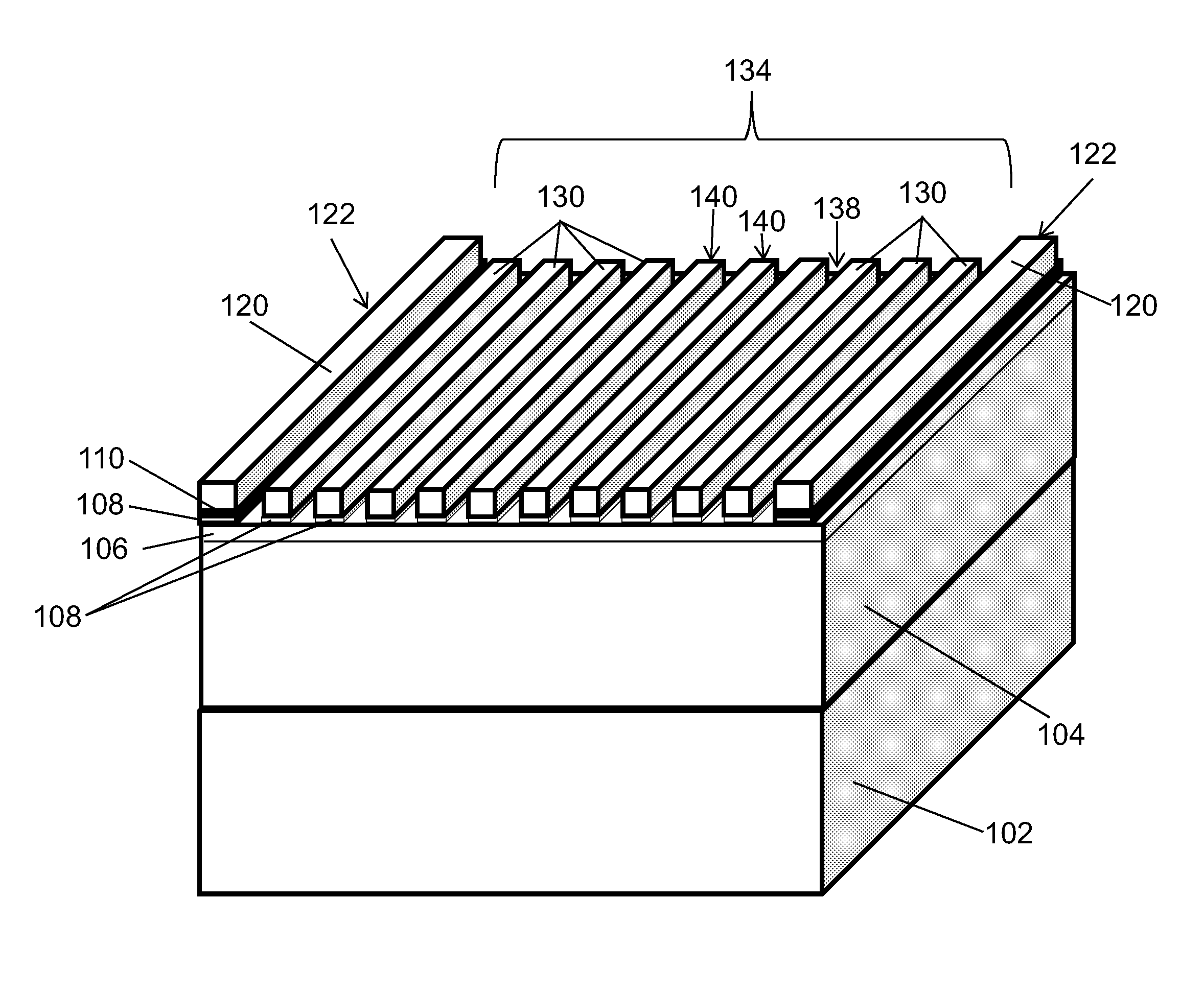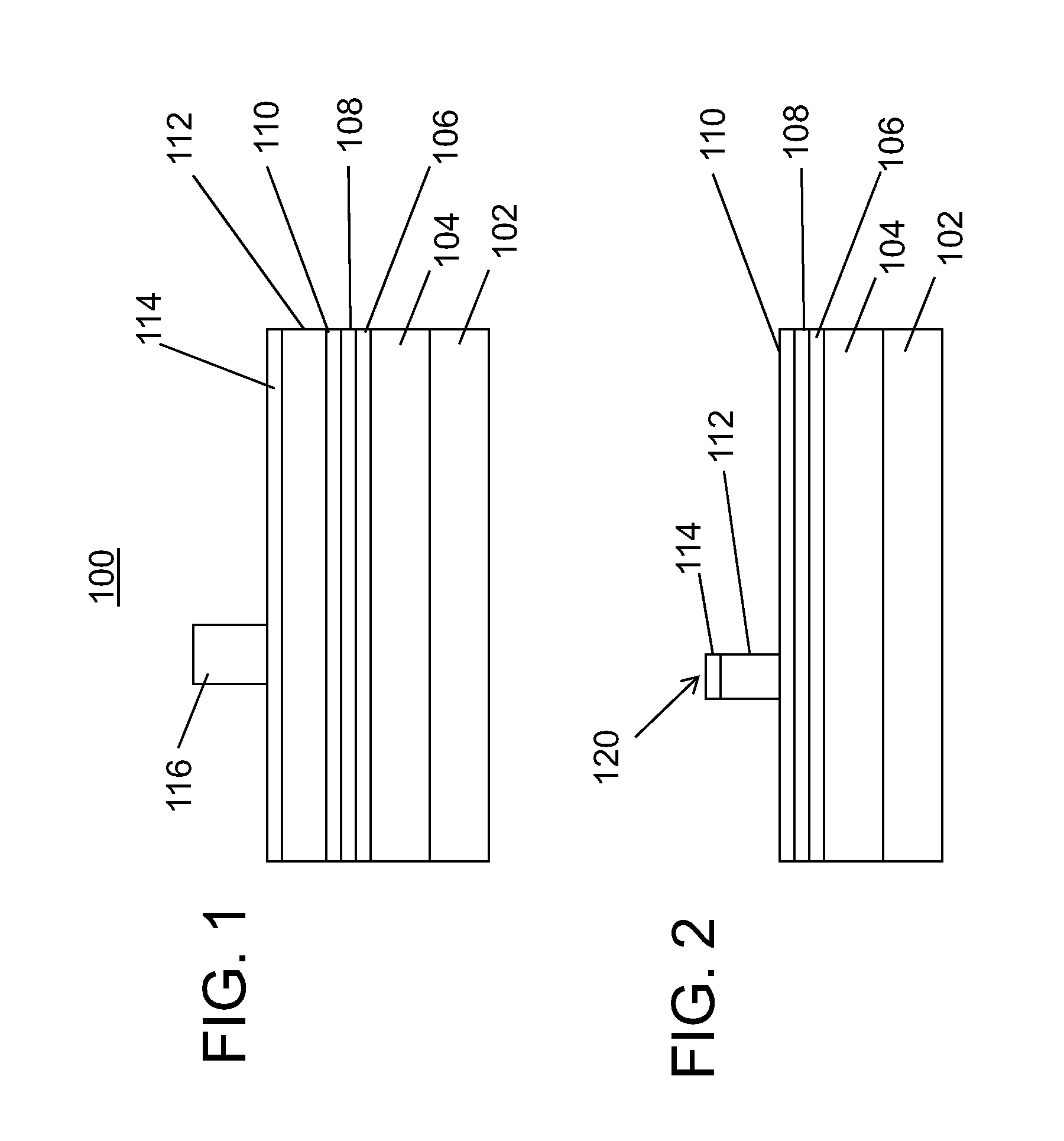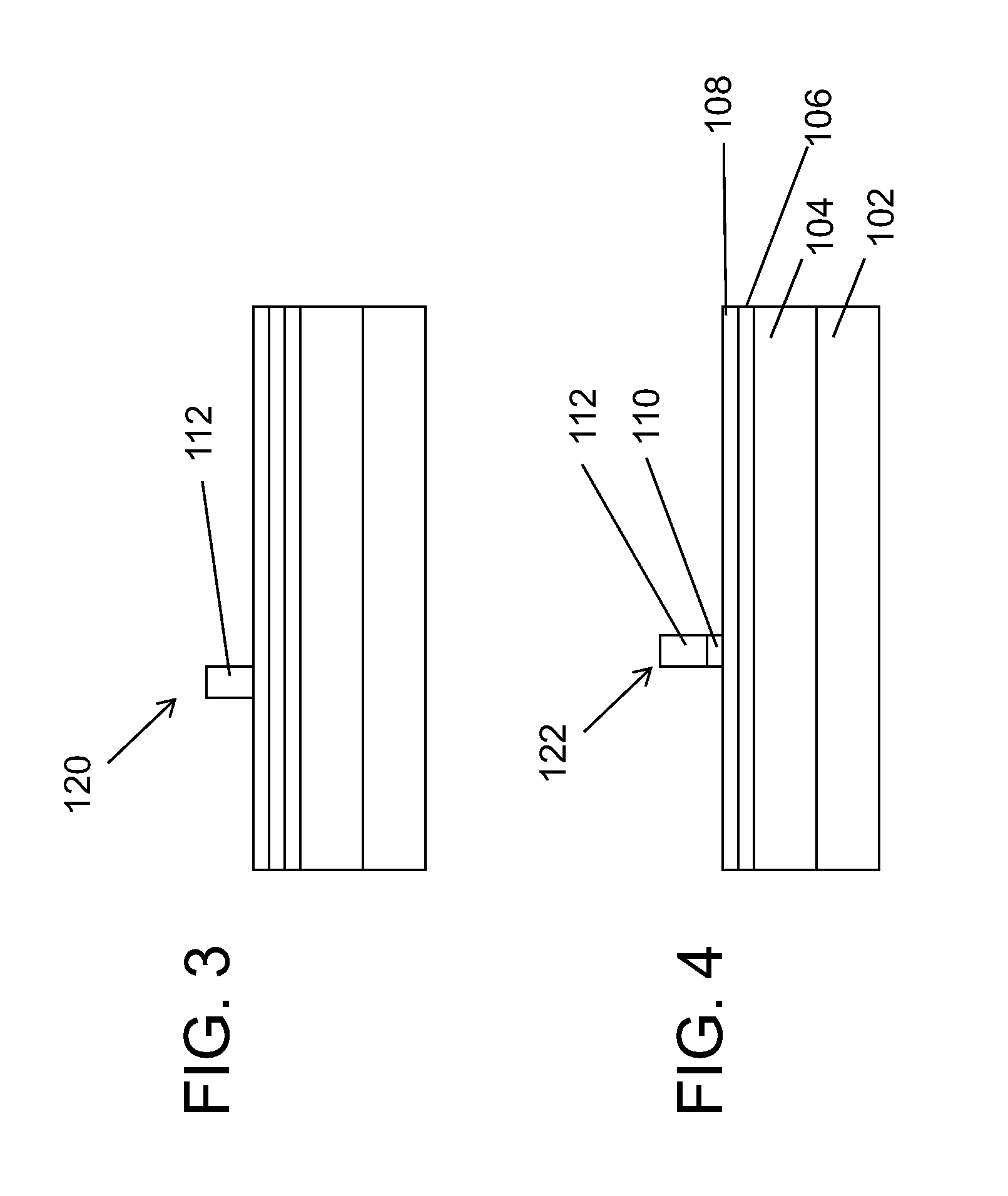Dsa grapho-epitaxy process with etch stop material
a grapho-epitaxy and stop material technology, applied in the field of semiconductor/solid-state device manufacturing, basic electric elements, electric devices, etc., can solve the problems of high defect level, large resist feature size, and inability to form high-resolution mandrels, so as to reduce the width of the template structure
- Summary
- Abstract
- Description
- Claims
- Application Information
AI Technical Summary
Benefits of technology
Problems solved by technology
Method used
Image
Examples
Embodiment Construction
[0020]In accordance with the present principles, devices and methods are described for providing high-resolution templates for directed self-assembly (DSA) structures. While the present embodiments will be described with respect to templates for DSA, it should be understood that the present principles may be applied to any semiconductor fabrication process. In one embodiment, a multi-layer structure employs lithography and etch stop / release layers to provide the high-resolution template. In a particularly useful embodiment, a resist layer, anti-reflection coating (ARC), an optical planarization layer (OPL) and etch stop layer are employed together to form a stack structure. The resist is lithographically patterned and employed as an etch mask to etch narrow lines (e.g., 10-20 nm) in the ARC, OPL and, eventually, the etch stop layer. The etch stop layer functions as a combined etch stop and release layer under the stack for ease of removal of patterning film without damaging a neutra...
PUM
 Login to View More
Login to View More Abstract
Description
Claims
Application Information
 Login to View More
Login to View More - R&D
- Intellectual Property
- Life Sciences
- Materials
- Tech Scout
- Unparalleled Data Quality
- Higher Quality Content
- 60% Fewer Hallucinations
Browse by: Latest US Patents, China's latest patents, Technical Efficacy Thesaurus, Application Domain, Technology Topic, Popular Technical Reports.
© 2025 PatSnap. All rights reserved.Legal|Privacy policy|Modern Slavery Act Transparency Statement|Sitemap|About US| Contact US: help@patsnap.com



